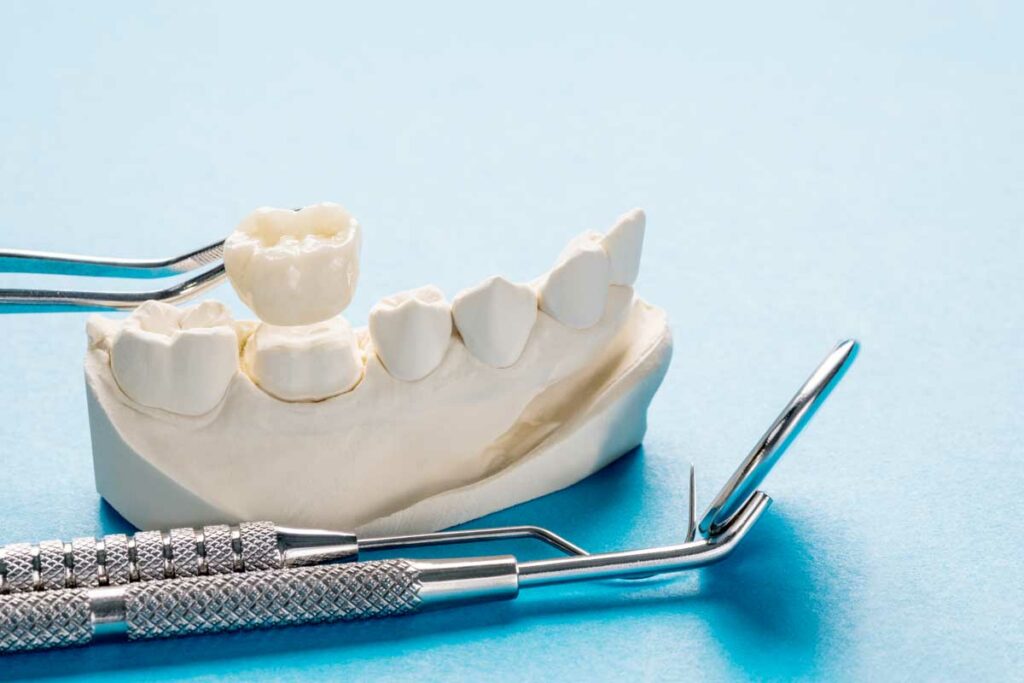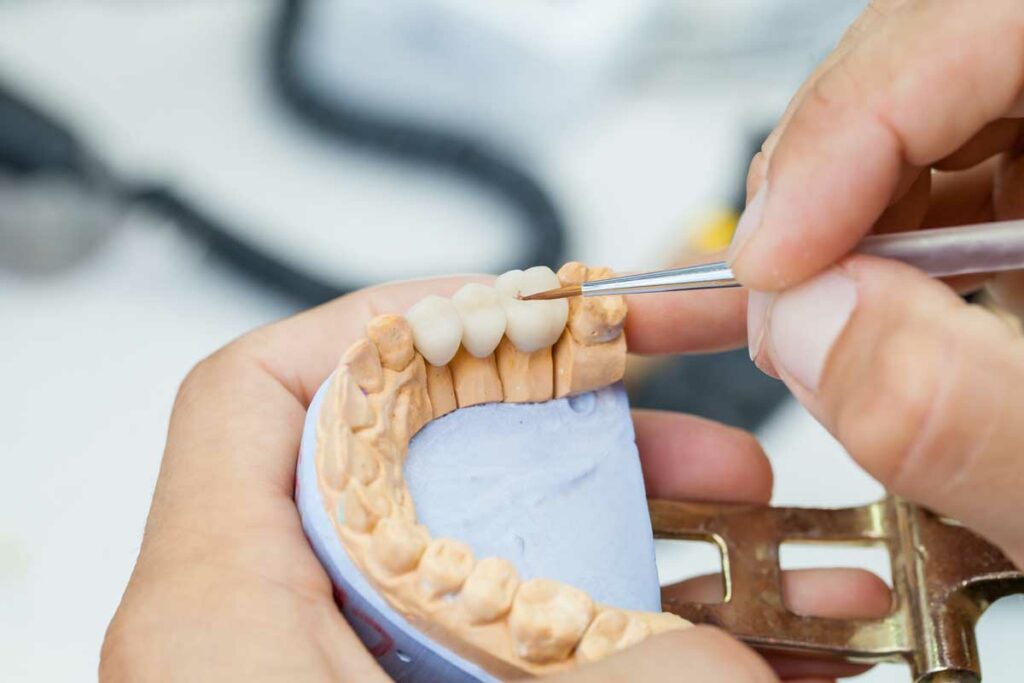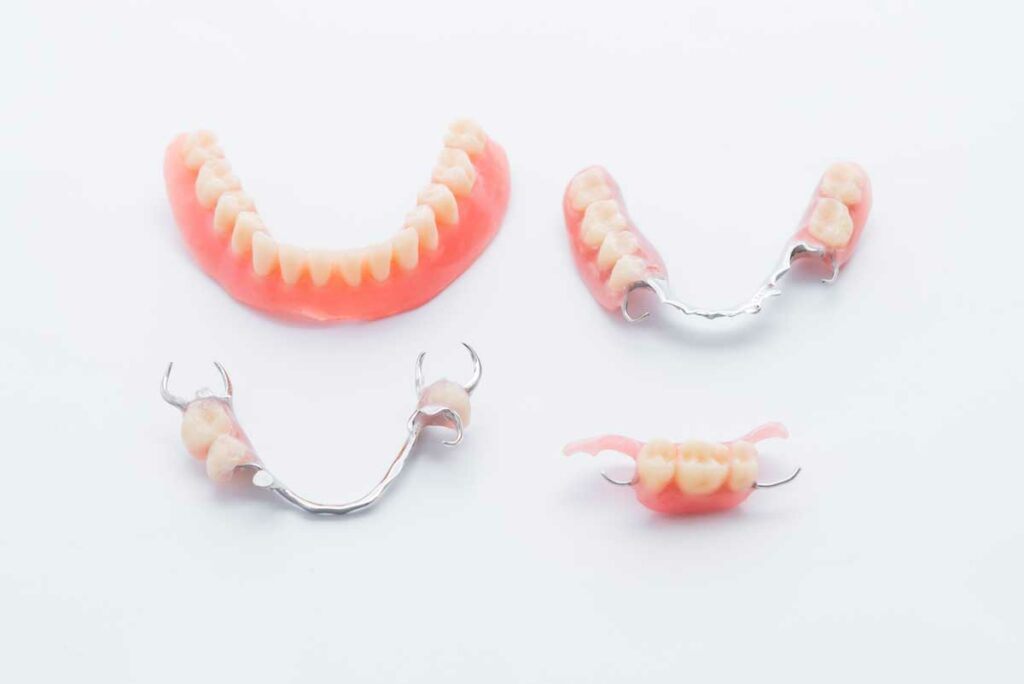Prosthetic treatments
Dental prostheses
Crowns
Dental crowns cover the outer surface of a damaged tooth. These crowns come in a variety of different materials.
We often recommend crowns if other measures cannot restore the condition of the tooth, or if the patient has had root canal treatment. It may take two visits to get a crown. We fabricate a temporary crown in our practice. Once the final crown has been made in our laboratory, you can come back to have the crown fitted to your tooth. With proper care, these crowns can last for decades.
There are a few reasons you may need a crown:
- To restore or strengthen a weak or heavily restored tooth to change the appearance of your tooth
- To protect the tooth after root canal treatment
- After trauma or fracture of a tooth


Bridges
A bridge is used when you need to replace multiple teeth. A bridge connects multiple artificial teeth in your mouth by attaching a crown and bridge to your jaw.
This is a permanent solution. But it takes good dental hygiene to maintain a bridge.
Dental implants
Have you lost all or some of your natural teeth? Thanks to advances in modern dentistry, bridges, dentures and flexible dentures are not the only solution. Have you heard of dental implants? Implantology offers a clinically proven solution to regaining your beautiful smile, and being able to bite and chew with confidence. Dental implants are designed on the basis of natural teeth, which generally consist of two main parts:
- The crown, which sits above the gum line
- The root, which sits securely beneath the gum line

How they work
- Dental implants are small metal screws inserted into the jaw to replace a missing tooth.
- Once in place, crowns, bridges and prostheses can be attached to the implants, creating a stable, natural-looking restoration.
Lifetime benefits:
- If you lose your natural teeth, over time your jawbone and surrounding tissues begin to dissolve and shrink. Implants placed into the jaw stimulate growth in the remaining bone, and encase the metal along with tiny blood vessels, preventing bone loss.
- The preserved bone structure prevents the face from looking “sunken in”.
- Implants help restore function, so you can eat, chew and bite as usual.
- Implants are a natural looking way to replace missing teeth.

Dentures
If you are missing some or all of your teeth, one solution is dentures.
They work like this:
- A denture is a material that mimics the appearance of teeth and gums to give your mouth a natural look.
- A denture is made in a dental laboratory on the basis of impressions.
- The denture is made to fit snugly on your gums, and you can remove them for cleaning.
When you wear dentures for the first time, you may have to get used to speaking, eating and chewing. It is important to pay special attention to your dental hygiene to avoid bad breath, tooth decay and gum disease. Your dental hygienist can show you the best way to care for your dentures and gums, and will tell you about special brushes you can use for this.
Lifetime benefits:
- A solution to replace multiple missing teeth.
- For a natural looking smile.
- Most cost-effective option.

